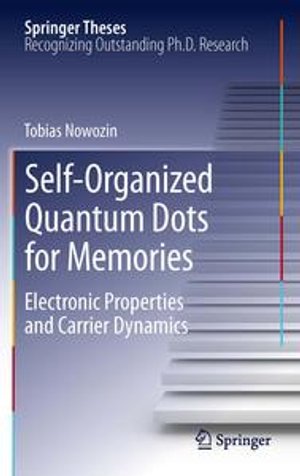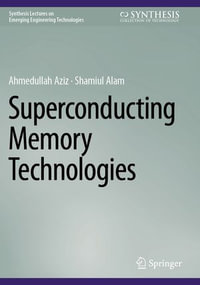
eTEXT
Self-Organized Quantum Dots for Memories
Electronic Properties and Carrier Dynamics
By: Tobias Nowozin
eText | 1 October 2013
At a Glance
eText
$159.01
or
Instant online reading in your Booktopia eTextbook Library *
Read online on
Desktop
Tablet
Mobile
Not downloadable to your eReader or an app
Why choose an eTextbook?
Instant Access *
Purchase and read your book immediately
Read Aloud
Listen and follow along as Bookshelf reads to you
Study Tools
Built-in study tools like highlights and more
* eTextbooks are not downloadable to your eReader or an app and can be accessed via web browsers only. You must be connected to the internet and have no technical issues with your device or browser that could prevent the eTextbook from operating.
ISBN: 9783319019703
ISBN-10: 3319019708
Series: Springer Theses
Published: 1st October 2013
Format: ePUB
Language: English
Publisher: Springer Nature
You Can Find This eBook In
Non-FictionEngineering & TechnologyElectronics & Communications EngineeringElectronics EngineeringElectronic Devices & MaterialsSemi-Conductors & Super-ConductorsTechnology in GeneralNanotechnologyCircuits & ComponentsIndustrial Chemistry & Manufacturing TechnologiesOther Manufacturing TechnologiesPrecision Instruments Manufacture
This product is categorised by
- Non-FictionEngineering & TechnologyElectronics & Communications EngineeringElectronics EngineeringElectronic Devices & MaterialsSemi-Conductors & Super-Conductors
- Non-FictionEngineering & TechnologyTechnology in GeneralNanotechnology
- Non-FictionEngineering & TechnologyElectronics & Communications EngineeringElectronics EngineeringCircuits & Components
- Non-FictionEngineering & TechnologyIndustrial Chemistry & Manufacturing TechnologiesOther Manufacturing TechnologiesPrecision Instruments Manufacture
- Non-FictionComputing & I.T.Computer HardwareStorage Media & Peripherals
- Non-FictionSciencePhysicsMaterials & States of Matter
- Non-FictionComputing & I.T.Computer Hardware





















